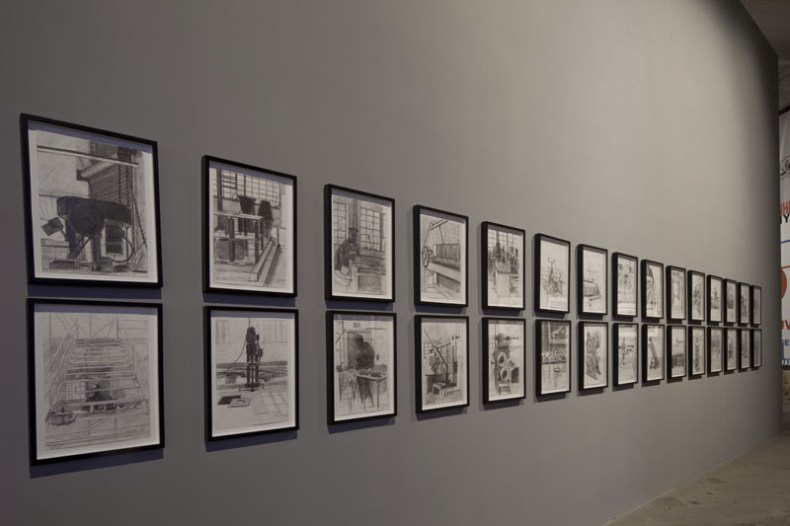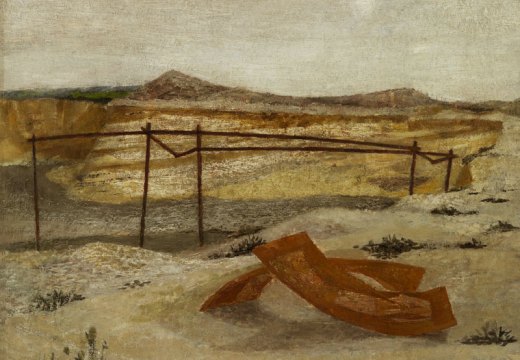I used to complain that poor countries were marginalised at the Venice Biennale – despite the ever-increasing number of participating nations, the rich countries always seemed to hog the top spots. The tiny South Pacific state of Tuvalu was obliged to make its 2013 Biennale debut in a pavilion on the industrial outskirts of Mestre, but this year it has space in the Artiglierie to make its artistic point about global warming with an installation of tanks full of water.
With Nigerian Okwui Enwezor’s appointment as curator of this year’s international exhibition, ‘All the World’s Futures’, the margins have been drawn into the centre. Of the 136 invited artists, around a third come from developing or war-torn countries. Enwezor’s exhibition is truly international, yet it feels disappointingly homogeneous. A record number of artists have made new work especially for the show and, from the look of it, they were following a brief.
By putting Marx at the beating heart of his exhibition with a continuous reading of Das Kapital in the Central Pavilion, Enwezor has made his political position clear, and the art he has selected is relentlessly on message. You could ask the question I saw fly-posted to the wall outside Arsenale: ‘What does an elitist event like the Venice Biennale have to do with Karl Marx?’ But that’s not my quarrel with this exhibition. Enwezor’s curatorial problem isn’t Communism, it’s Puritanism: a joyless preference for the verbal over the visual.
There’s a scattering of paintings by Chris Ofili, Kerry James Marshall and Georg Baselitz; sculptures by Adel Abdessemed, Terry Adkins and Monica Bonvicini; photographs by Walker Evans, Andreas Gursky, and Keith Calhoun & Chandra McCormick; and films by Steve McQueen, Christian Boltanski and Theaster Gates. But a huge proportion of works deal in words rather than images, in the deadpan inter-national language of English. Polls, graphs, maps and diagrams jostle with printed slogans, banners and scribbled mutterings. The few drawings are either pencil copies of news photographs, like Rirkrit Tiravanija’s Demonstration Drawings, or illustrations, like Joachim Schönfeldt’s Factory Drawings Drawn in Situ. They have all the inspiration of a sixth form art project, and less of the individuality.

Factory Drawing Drawn In Situ (Anvil 7) (2010–15), Joachim Schonfeldt. Photo by Alessandra Chemollo. Courtesy la Biennale di Venezia
Click here for the very best of the Venice Biennale…
At the opening of the Pavilion of the Holy See, President Paolo Baratta congratulated the Vatican on entering into the artistic spirit of the Biennale: ‘The true reality in the world of art is the moment when someone feels obliged to express something that cannot be expressed in words’, he said. There are few such moments at the centre of this Biennale, but they survive on the margins. In the Iraq Pavilion at San Tomà I found a roomful of works by Salam Atta Sabri that restored my faith in the expressive power of drawing, and perfectly illustrated Baratta’s principle. Unlike the many artists in the international exhibition who have left troubled countries to forge careers in the west, Salam Atta Sabri, a ceramics graduate of California State University, has returned home. Since 2005 he has been living in Baghdad keeping a visual diary of intricate, obsessive drawings as a creative defence against the struggles of life in the conflict-scarred city. ‘Modern Art Museum: DO NOT Enter’ says one drawing. The words are in English because he hoped the series might be shown in a gallery in the west after his death. But it was seen by Belgian curator Philippe Van Cauteren and – in the true spirit of the Biennale – is getting a showing in his lifetime in an exhibition aptly titled Invisible Beauty.
‘All the World’s Futures – the 56th International Art Exhibition’ is at the Giardini and Arsenale venues, Venice, until 22 November.
Related Articles
What to see at the Venice Biennale (May issue preview)
The Very Best of the Venice Biennale (Tom Jeffreys & Crystal Bennes)


















![Masterpiece [Re]discovery 2022. Photo: Ben Fisher Photography, courtesy of Masterpiece London](http://zephr.apollo-magazine.com/wp-content/uploads/2022/07/MPL2022_4263.jpg)
‘Like landscape, his objects seem to breathe’: Gordon Baldwin (1932–2025)